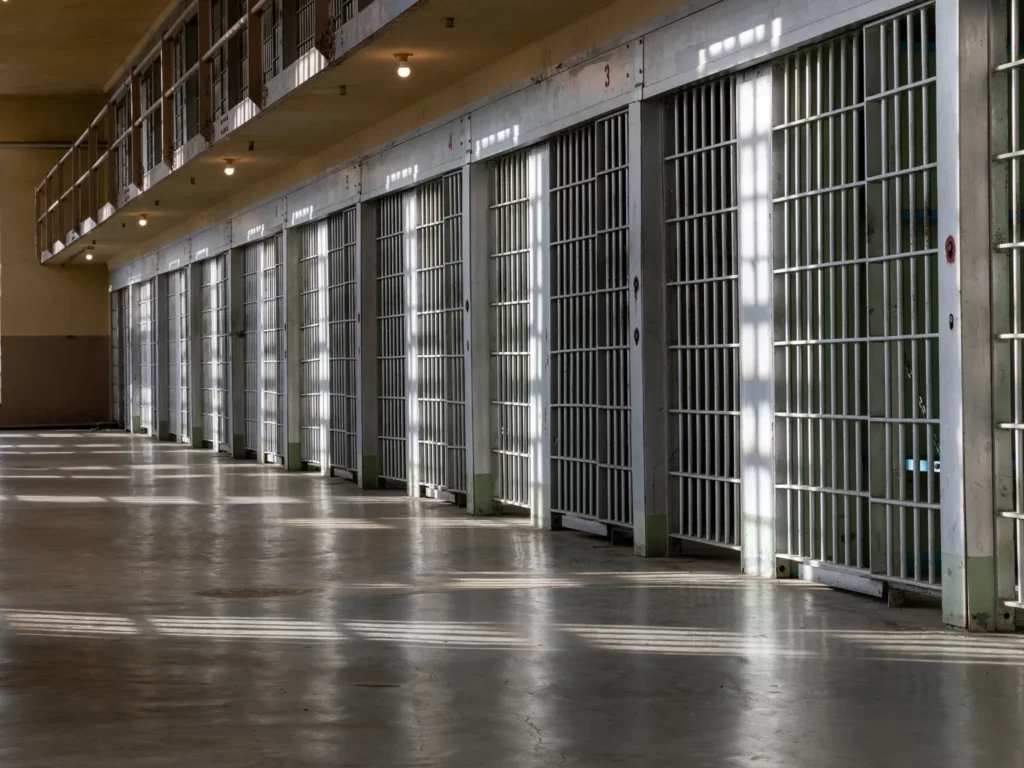Level 4 Prison : The most dangerous and high-risk criminals are housed in level 4 prisons, sometimes referred to as maximum security prisons, which are very secure and subject to stringent monitoring. Only those convicted of egregious crimes, such as violent acts, numerous felonies, and other major risks to society, are housed in these facilities.
For the Web-Story of this Article “Click Here“.
A level 4 prison’s main goal is to protect the public by housing convicts who represent a serious danger of escaping or hurting others. Level 4 prisons use strict standards to preserve order and thwart security breaches.
They are distinguished by strengthened perimeters, surveillance technology, and significant staff training. These institutions emphasize isolation and containment as measures of control, subjecting inmates to extended periods of solitary confinement and limited privileges.
There are few rehabilitation programs available, and confinement rather than reintegration into society is the main goal. Level 4 prisons are one of the m formidable components of the criminal justice system due to the strict living standards and strong security measures.
What is Level 4 Prison?
The greatest degree of security within the criminal justice system is level 4, sometimes referred to as a maximum security jail. The most dangerous and high-risk convicts, particularly those convicted of heinous crimes including murder, terrorism, gang-related felonies, or repeat offenses, are housed in these institutions.

How Level 4 Prison Looks Like:
- Security Measures: To stop escapes and keep control of the inmate population, Level 4 prisons have strict security measures in place. High walls, razor-wire fence, electronic surveillance, and armed guard towers are frequently seen in these structures.
- Training for Staff: Correctional officials who operate in level 4 prisons receive extensive training on how to manage potentially dangerous situations and physical altercations with prisoners. Their major duty is to keep everything safe and orderly within the building.
- Classification of Inmates: Level 4 prisons frequently adopt a rigid classification system for inmates to make sure that people with comparable degrees of danger and security needs are confined together.
- Movement Restrictions: Level 4 jails place restrictions on an inmate’s ability to move about the building. They are always under intense observation, and they need permission and supervision to move between different prison sections.
- Solitary Confinement: Solitary confinement may be used as a disciplinary tool or to stop additional violence in specific situations, especially for prisoners who are judged to pose a serious risk to other inmates or to the facility’s security.
- Limited advantages: Compared to prisons with lesser levels of security, level 4 inmates have less access to leisure activities, educational opportunities, and other advantages. These limitations were put in place to guard against security breaches.
- Visitor Restrictions: In order to prevent any unlawful communication or efforts to smuggle contraband, visits for inmates in level 4 prisons are often more strictly supervised and observed.
- Control: Due to the high degree of security at level 4 prisons, there aren’t many rehabilitation programs available. Keeping order and safety are prioritized above making significant attempts to reintegrate prisoners.
Conclusion
Maximum-security prisons, often known as level 4 prisons, are essential facilities for remanding society’s most dangerous and high-risk offenders. These institutions place a high priority on public safety and discourage escape attempts with their stringent management and strong security measures.

While the emphasis on confinement might prevent criminal activities inside the jail, it also has drawbacks including high expenses and the possibility of inmate mental health problems.
Moving ahead, a balanced strategy that incorporates mental health services and rehabilitation programs into maximum-security prisons may provide a more efficient and compassionate way to lower recidivism and promote successful reintegration back into society following incarceration.
